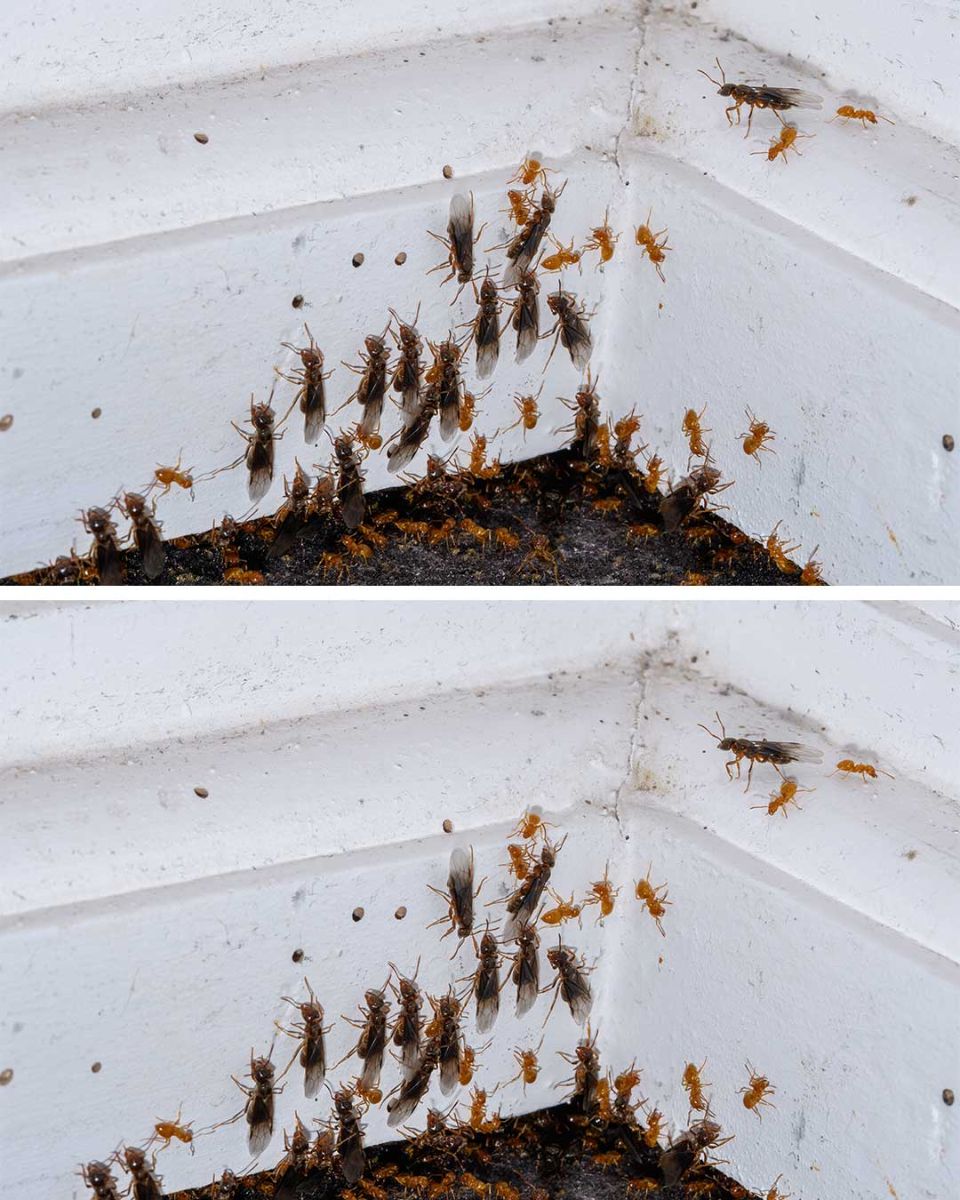ADVERTISEMENT
Steps to Take Immediately:
- Identify the Source:
- Look for the entry point where the flying ants are getting into your home. This could be a crack in the wall, gaps around windows or doors, or even vents and chimneys.
- Check for signs of nests or ant trails leading to and from the area. If you notice large numbers of ants congregating in a particular spot, it’s likely the location of the colony.
- Remove the Flying Ants:
- Vacuum them up: Use a vacuum cleaner to remove flying ants you see inside your house. Make sure to dispose of the vacuum bag or empty the canister immediately to prevent any ants from escaping.
- Use sticky traps: You can place flypaper or sticky traps near areas where you’ve spotted flying ants. These traps will help catch ants as they fly around the room.
- Seal the entry points: Close any windows or doors that might have been left open and check for gaps or cracks around the home that could serve as entry points.
How to Get Rid of Flying Ants:
- Examine the Ant Nest:
- Flying ants come from established colonies, so it’s essential to locate the source of the infestation. If you see a large number of ants swarming near a specific area, follow the ant trail to trace the nest.
- Look for signs of ants in hidden places like wall voids, attics, or under the house. Ant nests can sometimes be difficult to detect because ants prefer dark, secluded spaces.
- Use Ant Baits:
- Ant bait stations are one of the most effective ways to eliminate flying ants. Place ant bait near the areas where you’ve seen activity. The worker ants will take the bait back to the colony, poisoning the queen and other ants over time.
- Choose baits designed specifically for the type of ant you’re dealing with. Some baits work better for carpenter ants, while others may be more effective for sugar ants or odorous house ants.
- Apply Ant Killer Sprays:
- If you’ve identified the nest and can safely reach it, you can use an ant killer spray to eliminate the colony. These sprays are designed to kill ants on contact and can be applied directly to nests or trails.
- Be sure to follow the instructions on the product label for safe and effective use. Many sprays are not safe for use around children or pets, so take necessary precautions.
- Natural Remedies:
- If you prefer a natural solution, there are several DIY remedies that can help deter flying ants:
- Vinegar and water solution: Mix equal parts vinegar and water in a spray bottle. Spray this solution directly on flying ants or around entry points to deter them.
- Cinnamon: Sprinkle cinnamon powder around areas where ants are entering. Ants dislike the strong smell, and it can act as a natural repellent.
- Diatomaceous earth: This is a non-toxic powder made from the fossilized remains of tiny organisms. It works by dehydrating and killing ants when they come into contact with it. Sprinkle it around areas where ants are entering your home.
- Call a Professional:
- If the infestation is large or if you cannot locate the nest, it may be best to contact a professional pest control company. They have the expertise and tools to safely and effectively eliminate flying ants and their colonies from your home.
Preventing Future Infestations:
Once you’ve dealt with the immediate issue of flying ants, it’s crucial to take steps to prevent future infestations:
- Seal Cracks and Gaps:
- Inspect your home for cracks, gaps, or other openings that ants could use to enter. Seal up any possible entry points using caulk, weatherstripping, or other appropriate materials.
- Keep Your Home Clean:
- Regularly clean surfaces, floors, and countertops to eliminate food and water sources that may attract ants. Pay special attention to sugary substances, as they are particularly attractive to ants.
- Store food in airtight containers to keep it out of reach of pests.
- Trim Trees and Bushes:
- Keep trees and bushes trimmed away from the exterior of your home, especially if branches are touching the walls or roof. This reduces the chances of ants finding a way inside through overhanging branches.
- Maintain Your Yard:
- Make sure there are no piles of debris, wood, or leaves near your home’s foundation. These can attract ants and provide them with easy access to your home.
Conclusion:
Flying ants may be a nuisance, but with the right steps, you can get rid of them and prevent future infestations. By identifying the source of the problem, using targeted treatments like ant baits or sprays, and making sure your home is sealed properly, you can reclaim your space from these unwelcome pests. If the problem persists, don’t hesitate to reach out to a pest control professional for assistance. With a little effort, your home can remain flying-ant free.
ADVERTISEMENT
ADVERTISEMENT
